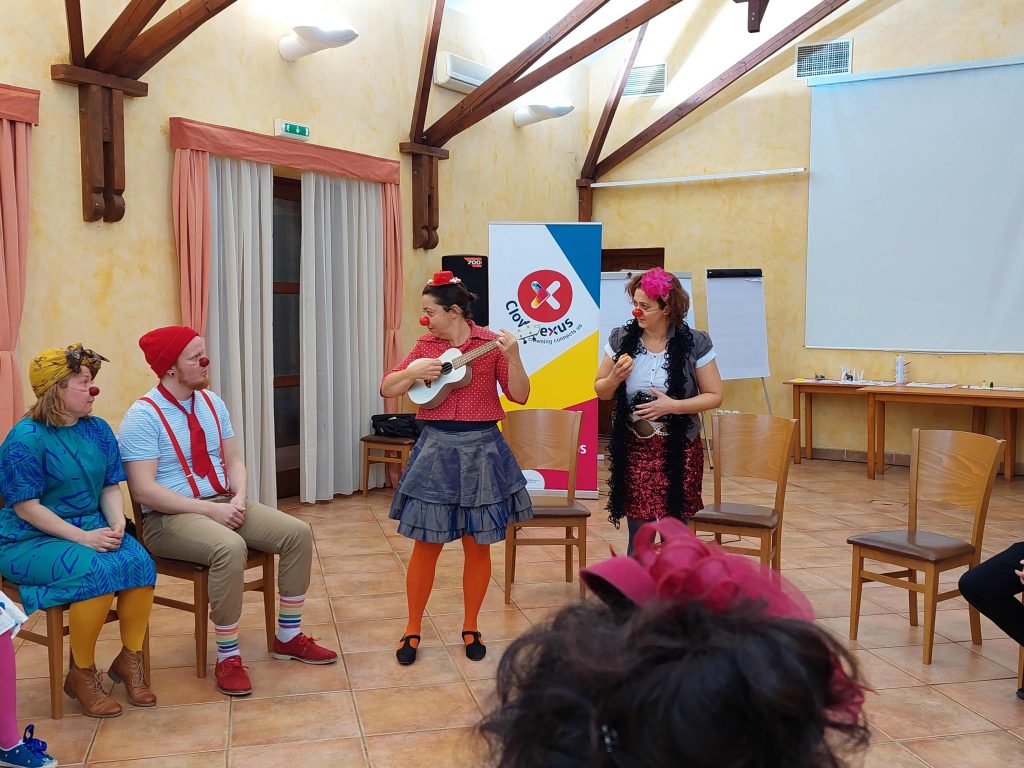Intention: Propose familiar activities that foster unity.
The clowns embody various animals, encouraging participants to use their bodies and join in the role-play.
This activity trains children to recognise the animals represented, promotes physical activity, and facilitates emotional expression in a fun and appropriate manner.




